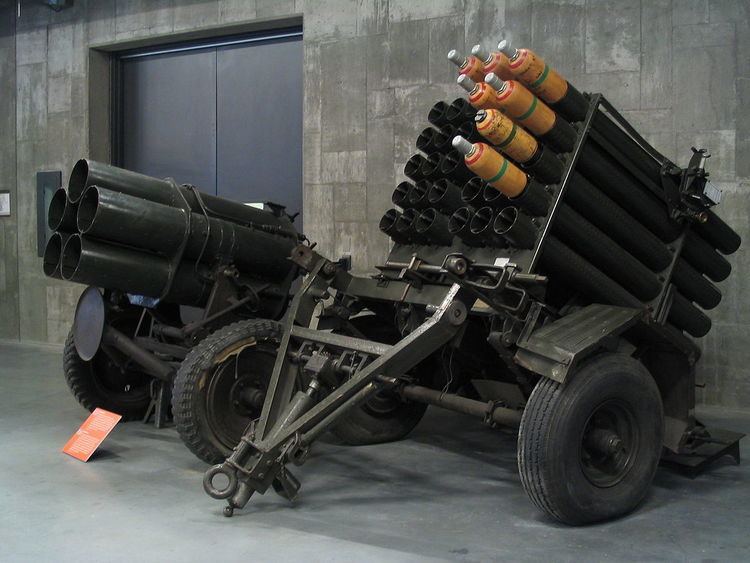Place of origin United Kingdom Weight 1,118 kg (2,465 lb) | Caliber 76.2 mm (3 in) | |
 | ||
Shell Rocket length: 1.77 m (5 ft 10 in)Rocket weight: 30.5 kg (67 lb)Warhead: 3.18 kg (7 lb) | ||
Mattress was the term applied to ground-based Western Allied multiple rocket launchers during World War II. Compared with the German and Soviet forays into this area (the Nebelwerfer and Katyusha launchers respectively) the western Allies developed and deployed these weapons late in the war. Nevertheless, they did see useful service as artillery support during the crossings of the Rhine and the Scheldt rivers.
Contents
Sea Mattress
The first multiple rocket launch system developed by the Allies was designed to be deployed on warships and landing craft and fired in support of troops in a landing action. The rockets were 5-inch cordite sticks and the launching system, known as a "mattress projector", was capable of projecting a salvo of 800 to 1,000 rockets 3,000 yards (2.7 km) in around 45 seconds. The weapon was also known as the stickleback.
Land Mattress
The so-called land mattress was a ground-based weapon named after its naval equivalent. Based on the Z gun anti-aircraft rockets, it was tested in the summer of 1944 and saw some action with British and Canadian troops, with mixed results. The Land Mattress was based on the 3-inch-diameter (76 mm) tube of the RP-3 or "60lb" rocket used as an air-to-ground weapon with naval 5-inch shells as warheads, and consisted of a 16- or 30-tube launching system mounted on a towed carriage. The land version had an operational range of 8,000 yards (7.3 km). Rounds were fired at a rate of 4 per second. At the crossing of the Scheldt over a thousand rockets were fired in 6 hours.
